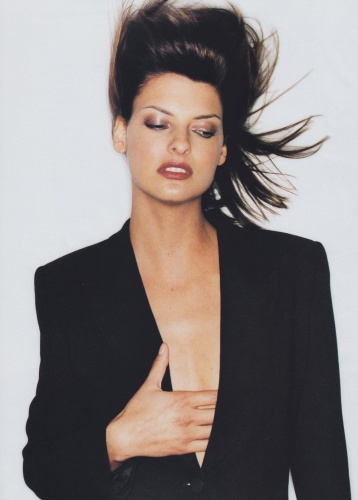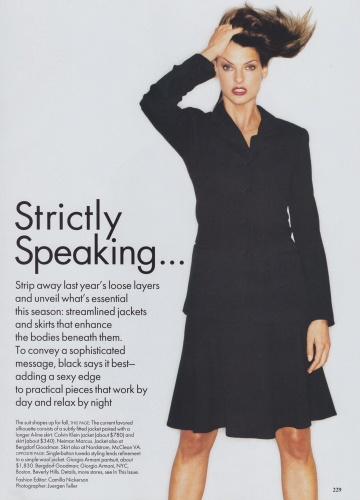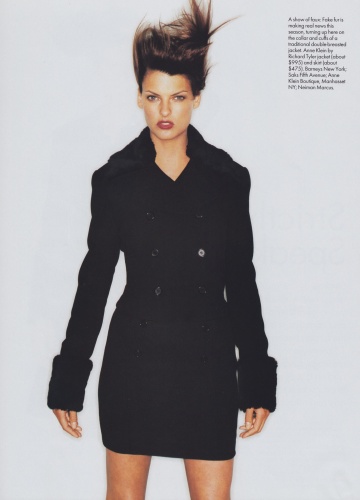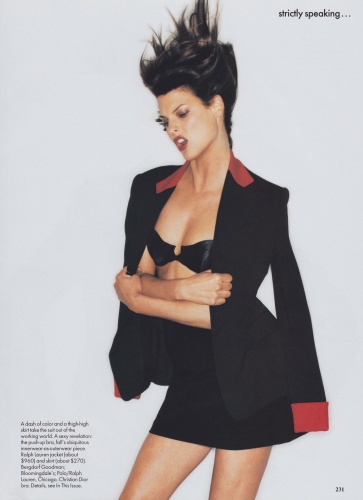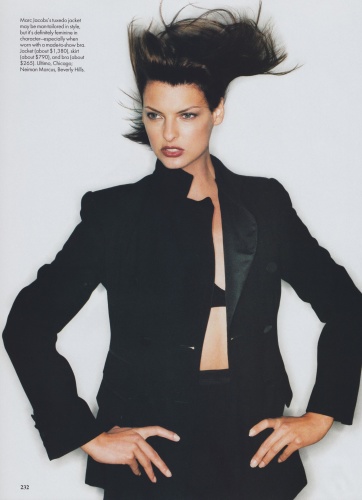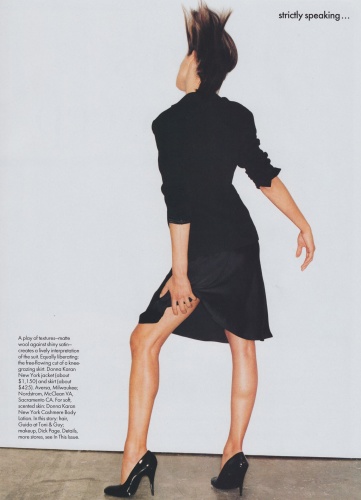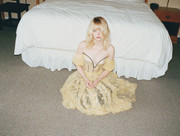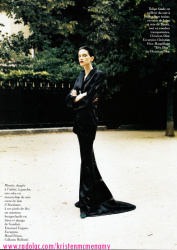You are using an out of date browser. It may not display this or other websites correctly.
You should upgrade or use an alternative browser.
You should upgrade or use an alternative browser.
Juergen Teller - Photographer
- Thread starter Estella*
- Start date
first documentary about juergen teller for arte tv
!!!
first documentary film about juergen teller for arte-tv!
>>> http://www.arte.tv/de/Juergen-Teller---Fotograf/6389528.html
german arte channel/ march 3rd 2012 _ 22.55h
.
!!!
first documentary film about juergen teller for arte-tv!
>>> http://www.arte.tv/de/Juergen-Teller---Fotograf/6389528.html
german arte channel/ march 3rd 2012 _ 22.55h
.
cologne_rocks
Active Member
- Joined
- Jul 30, 2009
- Messages
- 7,114
- Reaction score
- 2
^ Just saw it. Very insightful... Also he seems bit naive and... 'simple'.
- Joined
- Sep 27, 2010
- Messages
- 18,928
- Reaction score
- 4,371
...
styleBut that's what the lens is for.
I don't think like that. It must be somehow really, really, really in the back of my mind but I'm really driven about doing this work. For example, with Mariacarla, who I find sexually attractive, it never occurred to me when I went to Rome to photograph her in the daytime, that in the evening I'm going to **** her. It would never occur to me. Even on my own with them, in the evening in the hotel room. You think I'm going to drag her into the bedroom?
But with Kristen you can go a lot further than you can with Kate. You actually said that in your talk at the German Embassy. Am I going too far? For example, the photos you did of Kristen in 1996, the "Versace" photos, were profoundly disturbing.
They were shocking to some people, but they made complete sense to me and Kristen. I think people were losing the plot, I thought this is just how she is, and the whole idea had such a warped idea of sexuality and beauty. Kristen really looks like this, she is so extrovert and out there. This is how she is.
But at the time those photos appeared, she was so far out there, there were rumors of self-harm and all sorts. I think that was a very challenging moment for people because of the confusion: Is this a fashion shoot? What is this?
I remember so many enemies after that shoot. People crucified me, how I ruined Kristen McMenamy's career. What kept both of us alive at that point was that we were absolutely 100 percent behind our pictures. If she had flaked and had problems, then I would have thought, "Oh, I did something wrong here," but there was never a doubt. We were like blood brothers.
And there was blood. But you did say in the talk that you were more interested in negative responses anyway, after your experience with Die Zeit.
In that case I think it's boring if someone says, "Oh, your pictures are great." You wanna have criticism as constructive. I constantly want to learn, and I constantly reassess my photographs and think about them. I don't stop and say, "Oh, I'm a great photographer," and that's the end of the story. There's a picture I did when I was in Germany at my mum's, a black-and-white photograph I did naked on my dad's grave with a beer bottle and a cigarette in my hand and I was resting my foot on a football. That was very meaningful for me. I wanted to be closer to my dad. I had problems with alcohol and he was an aggressive alcoholic. He was smoking, I was smoking. But he never really liked football, he was very musical. My mum was sporty so we always watched football together. Then killing himself, blah blah blah, cut that story short. I had a lot of grudge against him obviously. It was difficult, but I wanted to make this photo to make peace with him, to recognize that I have problems too and I wanted to be there. It's a shocking photograph for some people but I think it's a sweet photo. Anyway, my mum was rambling around in my luggage—why? Me a grown-up man—and stupidly enough she found this photo. All hell broke loose at home, she was crying and she very strongly denied me to have this photograph published. "What are our neighbors going to think?" she was saying. It's a huge issue for her. I have no neighbors but she comes from the countryside. But it's something I really had to do and I published it anyway, because otherwise I wouldn't be doing my work. I felt really bad and guilty, I really felt like an ******* and therefore I did another portrait of me as an *******.
And how did the neighbors take to that one?
I don't know. That was a small book which didn't circulate too much in the village, except for maybe the gay guys. But what I love about that photograph is that where I come from, we have a sauna and our relationship with being naked is so much more normal than it is in England. I'm holding this football magazine and the headline says, "And now we have to let it rip" [he lets rip with a loud farting sound].
You talked about the meaning that photos take on after they've been published. Have these photos all taken on meaning for you, now that the initial story is out of the way?
Sometimes I do something as a real force and it comes from somewhere really deep. There's an intellectual thing hovering around my head about why I do things, but what comes from my heart, from my stomach is so overpowering that I'm kind of like a runaway train going towards it, nailing it. Afterwards I'm like, wooooah, where am I going here? Sadie says, "Have you thought about that?" And I had to do it, the complex complications come along afterwards. My instinct is so strong, it's quite natural, quite in harmony with my understanding of what's right and wrong.
And how would you assess that? On a moral basis? On an aesthetic basis? You've moved the goalposts pretty radically. But you mentioned photographing children in your talk, which is interesting, given what happened to people like Sally Mann and Jock Sturges when they photographed children.
I do see that as quite problematic what they do, I'm quite conservative in that way. I would never photograph my children like that naked. Then publish them and sell them as art? That's not right. I photographed Ed, but he's not naked…well, he's naked but you don't see anything.
I've known Vivienne Westwood for 16, 18 years; the last five or six years, I did her advertising campaign, so I've been dealing with this dress code of her fashion a lot. I'm mesmerized by who she is, what she stands for, I totally admire it and I think it's fabulous. Plus the way she looks, her white skin, her red hair, and the way she is so uninhibited. I had a real longing to know how she looks naked. Immediately, she said, "Yes, come next Sunday." Whenever I'm super-nervous, I take my wife with me, and Ed came. He was probably about 4 and a half at the time. So Andreas [Kronthaler, Westwood's husband] and Vivienne made a lovely early dinner for us, and Ed was on the couch playing with his PlayStation or whatever, and she said, "Are we going to do this or not?" because I was too shy to make that step. Then she gets undressed and Ed comes and says, "What's going on there? Why's Vivienne naked?" And I said, "Because I'm interested to see what she looks like and I want to photograph her and she looks really beautiful, I think." And he goes back to playing on his PlayStation. But then I'm in the middle of the room and Ed comes across [whispering], "Daddy, Daddy, can you photograph me nude?" I said, "Of course, when I'm finished with Vivienne, you can just lie down there," and he said [fierce whispering], "No, no, don't say anything to anyone. When we go back home." And I thought this was so lovely.
What do you think it meant to him?
I can't speak for him, but I think it was like something really nice to do, experiencing something together, having a human relationship with somebody else. I think I taught him something proper, and he enjoyed it, he was interested in how he would look in this photograph, and wanting to do something with Daddy. I think that's what photography is a lot for me too, doing something active with your life and having experiences. That's why I did this other series, Ed Having a Haircut.
I'm noticing lately there seem to be more children and animals and landscapes—more a sort of lyricism.
I always have that. Have you seen that book Nürnberg I did? And Ed in Japan? That's very romantic. There's always been this element of prettiness and gentleness in my work, but people always see the naked pictures or the fashion pictures.
As you get older as an artist, you start to see the continuities. I'm fascinated by how you revisit your work all the time, recontextualize it, look at things with older eyes.
Sometimes in the middle of it, you become very insecure, you think you've lost the plot, you've done all your work, it's complete rubbish and nothing is moving forward, and you're just lost. But I think it's a normal process one has to go through. You just have to ride that out and once you let loose and give up and start living, suddenly it's right here again, and you think, oh, that's what it is. And you go on and do it.
"I do this for myself first of all." You do say that.
I wanted to learn something in life. I prefer to be with older people than with younger spring chicken people. I love listening to the stories of William Eggleston and David Hockney, I find it comforting. Time slows down. We sit there for hours and hours and we talk, and it's really lovely in this age where everything is mobile and e-mail and running from place to place. I learn a lot from them. It's complicated being German, growing up in the aftermath of the war, and I feel like they didn't tackle it so well, they were talking around this Nazi **** in school. The badness was so present and so terrible but they couldn't explain it so well, for me it was not good. And I came to England in '86. I escaped from the army. I couldn't speak any English and when I got a bit better with my stuttering English they said, "Oh, just don't mention the war." I thought, did I just hear that? That was a bad joke, the English sense of humor. They think that's really funny. I thought, what the ****! I'm just trying to speak English and communicate with you. And now, coming back quickly to this, here's Norman, a Jewish German growing up in England and he was telling me this story about his mother's sister married to some Nazi officer and an SS officer hid them through the whole war, and that's where photography takes me, to interesting things. I'm interested in a wider spectrum of life.
But surely fashion's been a passport to experiences for you.
By no means am I slamming down fashion at all. I think I have a natural gift for photographing clothes very well. I find it very easy to interpret how designers like to see a woman in their creation. You have to have a sense of a body and how they shape it. I came to fashion a strange way round, when I got introduced to it in England through magazines like i-D and The Face. I started doing record covers and portraits and in these magazines were all these crazy fashion pictures. I thought, this is such a theater, this is fun, and I realized a lot of music movements pushed the fashion forward—the Beatles, the Sex Pistols, new wave, grunge, that was what came first, then came the fashion industry to make money out of it. I never want to lose sight of the seriousness of the business and how much money it makes, but I don't want to lose sight of the fantasy of it either. That fits in very well with me. There's a lot of fantasy in my photographs. It gives me a passport onto a theater stage.
So that's what your collaboration with Marc Jacobs has been all these years—a fantastic voyage.
To a certain extent. But it started because I could relate to his work very well. And on a personal level, I entered this whole relationship in a beautiful way 14 years ago. Venetia turned down the work with him because she was just about to give birth to our child, but Robert [Duffy, Jacobs' CEO] and Marc were kind of persisting. This was our first child and we were nervous and then they flew us over to reconsider their offer and I thought they were very understanding and nice and clearly Venetia couldn't say no. Then Marc suddenly said, "Kim Gordon is in London and she's wearing our dresses on stage and would you photograph her? We have a little bit of money to place it in a magazine," and I thought that would be a nice thing to do, to go to a Sonic Youth concert. I said, "As long as I'm in control of my image and about how it's going to appear on the double page, and I want to design how your logo is in relationship with my thing," and that's how I created Marc's visual imagery in a way. Then I did numerous things for free, same as the beginning at Helmut Lang. It was just the pleasure of being involved in such a thing. Then when Prada came on for Helmut and LVMH bought into Marc, I have to say they were very fair in giving me a proper share of earnings. But people were saying, "How do you get away with that, being in control of how it looks?" and I said, "Well, I put my heart and blood into it."
That's quite a body of work now, 14 years and counting. It becomes like a chronicle.
I never thought it was going to stop, even then. He never doubted it either. The better we got, the more confident we got, him with his design, me with my work, and the work we did together was an excellent package. And then I got insecure and he said something really profound. He said, "I really like that you get the best result if I let you do what you believe is right." Nobody said that to me before. He gave me the nod of confidence. So every time I had to jump into the cold water and deliver the goods to him. I could not hide behind an art director who I could blame, or the art director could blame me. Most of the time it was me on my own with a handbag of cameras and a handbag of bags and shoes. No assistant, no stylist or anything. That's how it started.
The only precedent I can think of is Guy Bourdin at Charles Jourdan, where the artist's aesthetic is at least as strong as the designer's aesthetic.
And it's probably Guy Bourdin who won over Charles Jourdan.
True, who remembers the shoes anymore?
That's what I mean. [Laughs.] But I'm not saying that I'm a Marc.
AuRevoirSavannah
Member
- Joined
- Jan 18, 2011
- Messages
- 304
- Reaction score
- 4
ellastica
Well-Known Member
- Joined
- Jul 7, 2010
- Messages
- 3,474
- Reaction score
- 353
Juergen Teller at the Marc by Marc Jacobs F/W 2011 show in New York with his beautiful daughter Lola,
who inspired the name for the Marc Jacobs fragrance, Lola. Photo Sabine Heller

source: purple.fr/diary
HeatherAnne
Well-Known Member
- Joined
- Jan 24, 2008
- Messages
- 24,230
- Reaction score
- 994
^ Thanks for scanning. 90's American vogue was so much better than 00's. Less commercial. That is a great editorial.
tentalicious
Active Member
- Joined
- Mar 24, 2010
- Messages
- 6,494
- Reaction score
- 15
for Juergen's fans, he has 70 pages in the last Paradis magazine.
Melancholybaby
Well-Known Member
- Joined
- Aug 25, 2011
- Messages
- 14,204
- Reaction score
- 2,426
Melancholybaby
Well-Known Member
- Joined
- Aug 25, 2011
- Messages
- 14,204
- Reaction score
- 2,426
Melancholybaby
Well-Known Member
- Joined
- Aug 25, 2011
- Messages
- 14,204
- Reaction score
- 2,426
W February 2013
Stars
Photographer: by Juergen Teller
Stylist: Zoe Bedeaux
Stars: Daniel Day-Lewis, Naomi Watts, Jack Black, Marion Cotillard, Javier Bardem, Kristin Stewart, Matthias Schoenaerts, Nicole Kidman, Quvenzane Wallis, John Hawkes, Dreama Walker, Scoot McNairy, Omar Sy, Mary Elizabeth Winstead, Philip Seymour Hoffman, Jessica Chastain, Matthew McConaughey, Keira Knightley, Frieda Pinto, Amy Adams, Ben Wishaw, Garrett Hedlund, Kerry Washington, Rebel Wilson, Rachel Weisz, Elle Fanning, Richard Gere, Denzel Washington, Ben Affleck, Bradley Cooper, topless Dree Hemingway, Carmen Ejogo & Tom Cruise















wmagazine.com
Stars
Photographer: by Juergen Teller
Stylist: Zoe Bedeaux
Stars: Daniel Day-Lewis, Naomi Watts, Jack Black, Marion Cotillard, Javier Bardem, Kristin Stewart, Matthias Schoenaerts, Nicole Kidman, Quvenzane Wallis, John Hawkes, Dreama Walker, Scoot McNairy, Omar Sy, Mary Elizabeth Winstead, Philip Seymour Hoffman, Jessica Chastain, Matthew McConaughey, Keira Knightley, Frieda Pinto, Amy Adams, Ben Wishaw, Garrett Hedlund, Kerry Washington, Rebel Wilson, Rachel Weisz, Elle Fanning, Richard Gere, Denzel Washington, Ben Affleck, Bradley Cooper, topless Dree Hemingway, Carmen Ejogo & Tom Cruise















wmagazine.com
Melancholybaby
Well-Known Member
- Joined
- Aug 25, 2011
- Messages
- 14,204
- Reaction score
- 2,426
Melancholybaby
Well-Known Member
- Joined
- Aug 25, 2011
- Messages
- 14,204
- Reaction score
- 2,426
VogueGirl8910
Well-Known Member
- Joined
- Apr 14, 2008
- Messages
- 47,979
- Reaction score
- 8,825
Similar Threads
Users who are viewing this thread
Total: 1 (members: 0, guests: 1)
New Posts
-
-
-
-
Jonathan Anderson - Designer, Creative Director of JW Anderson & Christian Dior (9 Viewers)
- Latest: FashionPower
-

















































